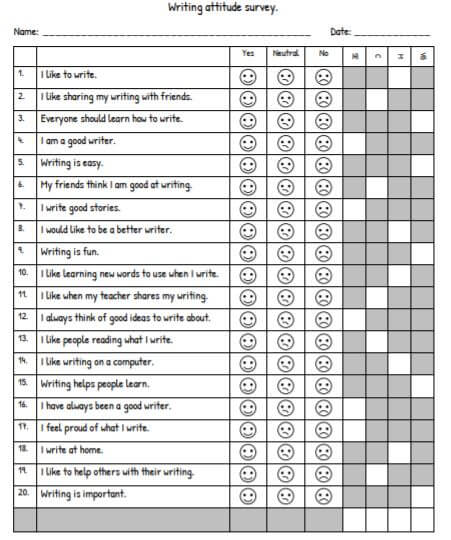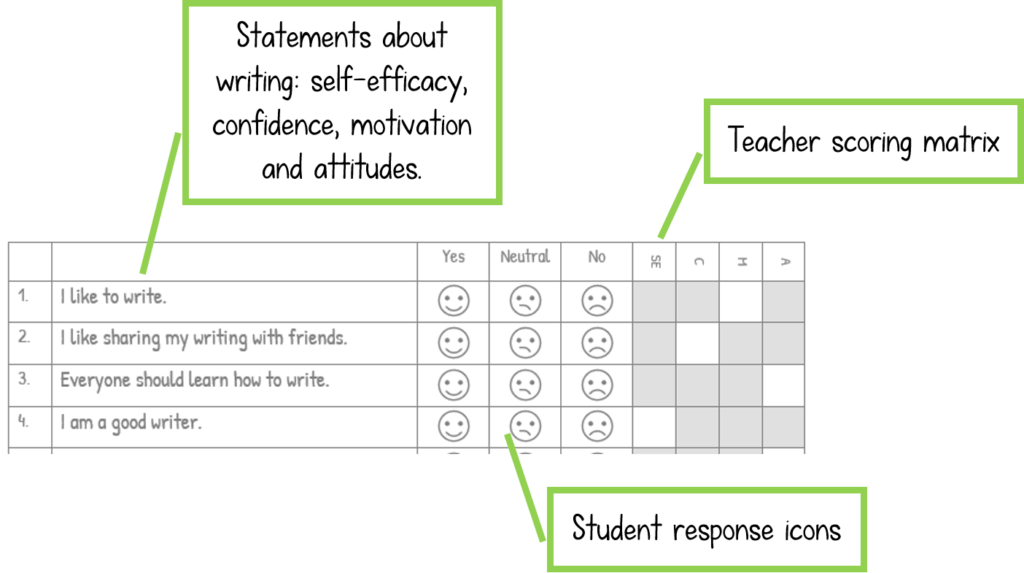A writing attitude survey for primary school students.

By KELLIE
Intro
A ‘Writing Attitude Survey’ is a simple way to learn more about how students feel towards both writing and themselves as writers. These attitudes influence students’ motivation for writing.
What influences students' motivation to write?
-
previous writing failure
-
poor handwriting and mechanical skills
-
disengagement
-
fear and anxiety
-
disinterest
-
confidence and self-belief
How do teachers learn about these attitudes?
There are many ways to learn more about these underlying influences on motivation.
Teachers can talk with students and ask questions. Conferences, interviews and informal discussions are essential when establishing a positive writing environment. The biggest difficulty is that they are time-consuming. Finding time can be especially difficult at the start of the school year.
Therefore methods that are quick and easy to complete are often used alongside conferencing. These methods include surveys and opinion polls.
A ‘Writing Attitude Survey’ is a method to gather information quickly. It provides useful insights into the feelings students have about writing. As well as how they see themselves as writers.
What influences attitudes towards writing?
-
How they perceive themselves as a writer. This is often referred to as writing self-efficacy.
-
If they value writing. This may change according to the writing tasks they are being asked to complete.
-
Their beliefs about writing in general. Students who feel writing is hard, or boring, are more likely to avoid writing.
-
Their understanding of writing as a collaborative or social construct. This will influence their confidence in sharing their writing with others.
Recognising that these factors may be influencing attitudes is beneficial to both teacher and students!
Writing attitude survey for primary school students.
- Self-efficacy (SE)
- Collaboration (C)
- Motivation to write (M)
- Values and beliefs about writing (VB)
- A happy face indicates agreement, or a positive response.
- An unhappy face means disagreement, or a negative response.
- The neutral face indicates that the student does not agree nor disagree with the statement, or is unsure.
Scoring and analysing the results.
Following the implementation, the teacher scores the responses.
- 3 points for a happy face or positive response
- 2 for neutral
- 1 for the unhappy or negative response
The teacher then calculates the total number for each category. Each category has the potential to be scored 15 points.
Lower scores show an negative reaction to the particular category. For example, a student who scores only 5 in the collaboration category may not be confident to share their writing. This may in turn impact on their motivation to write.
You can download a copy of the Writing Attitude Survey here.

Attitude is everything!
Of course, this is not the only information a teacher needs to know their students and their attitudes toward writing.
Teachers should gather information on students’ interests, as well as what they perceive as their strengths and areas for development in writing. Knowing the types of texts students prefer to write is also valuable.
Above all, it is essential teachers have a strong understanding of how each student is progressing in writing in relation to the curriculum. This is achieved through carefully analysing and reviewing student’s writing against the year level expectations.
Although it is often overlooked when establishing a writing classroom but teachers should have an understanding of how they see themselves as writers and how this impacts on their students.
Being aware of the many and varied reasons that contribute to why students are unmotivated to write is beneficial. Also knowing how this motivation (or lack of it) is influenced by internal and external factors is an essential step in developing a positive writing environment.
Motivating reluctant students and creating a positive writing classroom are topics many teachers enjoy discussing. Join us in The Lounge for more!
“The Lounge” is Quality Writing Instruction’s Facebook group, where you can share ideas and be supported by a fabulous group of like-minded teachers.
References:
Collie, RJ, Martin, AJ. & Curwood, JS, 2015, ‘Multidimensional motivation and engagement for writing’, Educational Psychology, http://dx.doi.org/10.1080/01443410.2015.1093607
Graham, S, MacArthur, CA & Hebert, M, 2019, ‘Best Practices in Writing Instruction’, Guilford Publications, New York.

